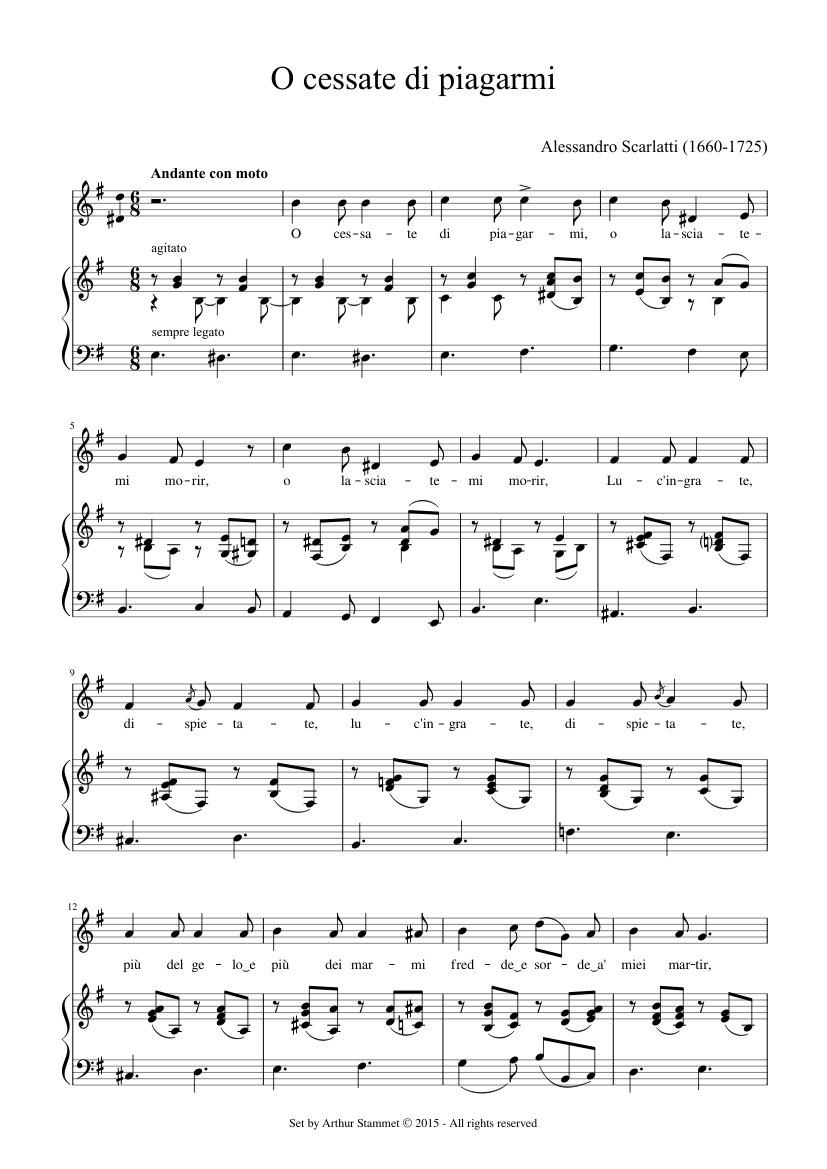

He died in Naples in 1725 and is entombed there at the church of Santa Maria di Montesanto. His last work on a large scale appears to have been the unfinished Erminia serenata for the marriage of the prince of Stigliano in 1723. By this time Naples seems to have become tired of his music the Romans, however, appreciated it better, and it was at the Teatro Capranica in Rome that he produced some of his finest operas ( Telemaco, 1718 Marco Attilio Regolò, 1719 La Griselda, 1721), as well as some noble specimens of church music, including a Messa di Santa Cecilia for chorus and orchestra, composed in honor of Saint Cecilia for Cardinal Francesco Acquaviva in 1721. In the interval he enjoyed the patronage of Ferdinando de' Medici, for whose private theatre near Florence he composed operas, and of Cardinal Ottoboni, who made him his maestro di cappella, and procured him a similar post at the Basilica di Santa Maria Maggiore in Rome in 1703.Īfter visiting Venice and Urbino in 1707, Scarlatti took up his duties in Naples again in 1708, and remained there until 1717. In 1702 Scarlatti left Naples and did not return until the Spanish domination had been superseded by that of the Austrians.
O CESSATE DI PIAGARMI NOTE SERIES
Here he produced a long series of operas, remarkable chiefly for their fluency and expressiveness, as well as other music for state occasions. In February 1684 he became maestro di cappella to the viceroy of Naples, perhaps through the influence of his sister, an opera singer, who might have been the mistress of an influential Neapolitan noble. The production at Rome of his opera Gli equivoci nel sembiante (1679) gained him the support of Queen Christina of Sweden (who at the time was living in Rome), and he became her maestro di cappella. He is generally said to have been a pupil of Giacomo Carissimi in Rome, and some theorize that he had some connection with northern Italy because his early works seem to show the influence of Stradella and Legrenzi.




 0 kommentar(er)
0 kommentar(er)
